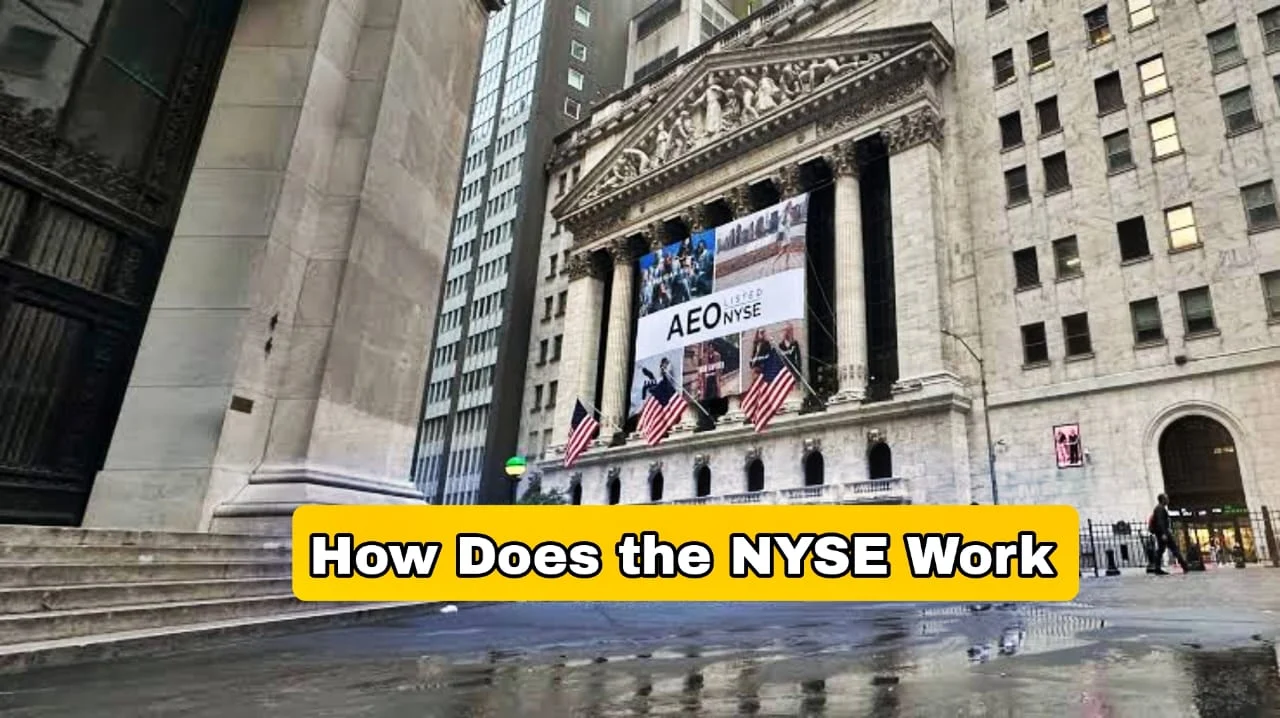Understanding the NYSE: The World’s Most Famous Stock Exchange
The New York Stock Exchange (NYSE) is the most famous and influential stock exchange in the world. Known for its historic significance, vast influence on global financial markets, and iconic trading floor, the NYSE plays a pivotal role in the global economy. Whether you're an investor, a financial analyst, or just curious about the stock market, understanding how the NYSE operates and its impact on markets is crucial. In this article, we’ll explore the NYSE, its history, how it works, and why it matters in the world of finance.
What is the New York Stock Exchange (NYSE)?
The New York Stock Exchange (NYSE) is a physical marketplace where stocks, bonds, and other securities are bought and sold. It is the largest stock exchange in the world by market capitalization, with over $30 trillion in total value as of 2023. Based in New York City, the NYSE is home to a vast number of publicly traded companies, ranging from multinational corporations to high-growth startups.
Unlike some other exchanges that operate solely online, the NYSE combines a physical trading floor with an electronic platform to facilitate the buying and selling of stocks. The trading floor is located on Wall Street in Manhattan, and it's here that you’ll find stockbrokers, traders, and specialists making transactions in person. Over the years, the NYSE has become synonymous with Wall Street and global finance.
A Brief History of the NYSE
The NYSE has a rich history that dates back to May 17, 1792, when 24 stockbrokers signed the Buttonwood Agreement. This agreement, named after the Buttonwood tree outside of 68 Wall Street, marked the founding of the exchange and was the beginning of what would become the world’s largest stock exchange.
In the early days, stock trading took place on the streets of New York City, but as trading volumes increased, the need for a more organized marketplace became apparent. The first official trading room was established in 1817, and the NYSE continued to grow throughout the 19th and 20th centuries, adapting to the changing financial landscape.
One of the most significant milestones in the history of the NYSE was the Great Stock Market Crash of 1929, which triggered the Great Depression. In response, the U.S. government implemented a series of reforms, such as the creation of the Securities and Exchange Commission (SEC) in 1934, to regulate the stock market and prevent such a collapse from happening again.
The rise of electronic trading in the 21st century has transformed the way the NYSE operates, but it remains one of the most important institutions in global finance.
How Does the NYSE Work?
The NYSE operates as an auction market, meaning that buyers and sellers place bids and offers for stocks, and transactions are made when a buyer’s bid matches a seller’s offer. This process happens both electronically and on the trading floor, which is why the NYSE is sometimes referred to as a hybrid exchange.
Here’s a closer look at how the NYSE works:
1. Market Makers and Specialists
On the trading floor, specialists or market makers are responsible for overseeing the trading of specific stocks. They maintain order and liquidity in the market by matching buy and sell orders. Market makers act as intermediaries between buyers and sellers, ensuring that there is always someone willing to buy or sell shares of a given company. This system helps prevent the market from becoming too volatile.
2. Orders and Bids
When investors want to buy or sell stocks on the NYSE, they place orders with their brokers. These orders include specific information, such as the number of shares, the price at which they’re willing to buy or sell, and the time frame for the transaction. There are two main types of orders:
- Market orders: These orders are executed immediately at the best available price.
- Limit orders: These orders specify the maximum or minimum price at which an investor is willing to buy or sell a stock.
3. Open and Close
The NYSE operates on regular trading hours, from 9:30 AM to 4:00 PM EST, Monday through Friday. The opening bell rings at 9:30 AM to signal the start of the trading day, and the closing bell rings at 4:00 PM to mark the end of the day’s trading session.
While the NYSE primarily operates during regular trading hours, it also allows for pre-market trading (before 9:30 AM) and after-hours trading (after 4:00 PM), although these trading periods tend to have lower volume and higher volatility.
4. Electronic Trading
Although the NYSE is famous for its physical trading floor, the majority of trading now occurs electronically through the NYSE Arca (Archipelago Exchange), an electronic system that facilitates automatic order matching. In fact, electronic trading accounts for over 80% of the trades executed on the NYSE today.
Why is the NYSE Important?
The NYSE is not only important for the companies listed on it, but also for investors, the economy, and global financial markets. Here are some reasons why the NYSE holds such significance:
1. A Global Economic Indicator
As the largest stock exchange by market capitalization, the NYSE is a bellwether for global economic health. The performance of stocks listed on the NYSE is closely watched by governments, investors, and analysts worldwide. Movements in the NYSE index, such as the Dow Jones Industrial Average (DJIA), provide insights into the state of the economy, corporate profits, and investor sentiment.
2. Raising Capital for Companies
Companies looking to raise capital to fund expansion or pay down debt can do so by listing their stocks on the NYSE through an Initial Public Offering (IPO). An IPO allows companies to sell shares to the public for the first time and is an important step for businesses seeking to grow. Over the years, the NYSE has facilitated the raising of billions of dollars for companies around the world.
3. Market Liquidity
The NYSE’s role as a highly liquid marketplace means that stocks can be bought and sold quickly and easily. This liquidity is crucial for investors who want to buy or sell large quantities of shares without significantly affecting the stock price. The efficient functioning of the NYSE provides stability to financial markets and fosters investor confidence.
4. Investor Confidence and Trust
The NYSE has built a reputation for transparency, security, and regulation, all of which contribute to investor trust. It is heavily regulated by the U.S. Securities and Exchange Commission (SEC) and is subject to strict listing and reporting standards. This regulatory environment helps prevent market manipulation and fraud, offering investors a safer environment for trading.
How to Invest in the NYSE?
Investing in the NYSE is possible through buying stocks of individual companies or via Exchange-Traded Funds (ETFs) and mutual funds that track NYSE-listed companies. To invest, an individual needs to set up an account with a brokerage firm or use a trading platform that provides access to the stock exchange. Some of the most popular stocks traded on the NYSE include companies like Apple, Coca-Cola, ExxonMobil, and General Electric.
Key Indexes on the NYSE
Several key indexes track the performance of stocks listed on the NYSE. These indexes provide a snapshot of the broader market and are used as benchmarks for evaluating individual stock performance. Some of the most widely followed indexes include:
- Dow Jones Industrial Average (DJIA): Composed of 30 major publicly traded companies in various industries, the DJIA is one of the oldest and most watched indexes.
- S&P 500: While not exclusive to the NYSE, the S&P 500 includes many NYSE-listed companies and is often used to track the overall performance of the U.S. stock market.
- NYSE Composite Index: This index tracks the performance of all stocks listed on the NYSE, providing a broader measure of the exchange’s performance.
Conclusion
The New York Stock Exchange (NYSE) is a cornerstone of the global financial system, serving as a vital marketplace for stocks, bonds, and other securities. With its rich history, hybrid trading system, and significant influence on global markets, the NYSE is an essential part of the world’s financial infrastructure. Whether you're an individual investor, a financial professional, or simply someone interested in understanding the stock market, the NYSE is at the heart of many key economic developments and trends. Understanding how the NYSE operates and its role in shaping the global economy can provide you with valuable insights into the world of finance and investing.
Read More: -







